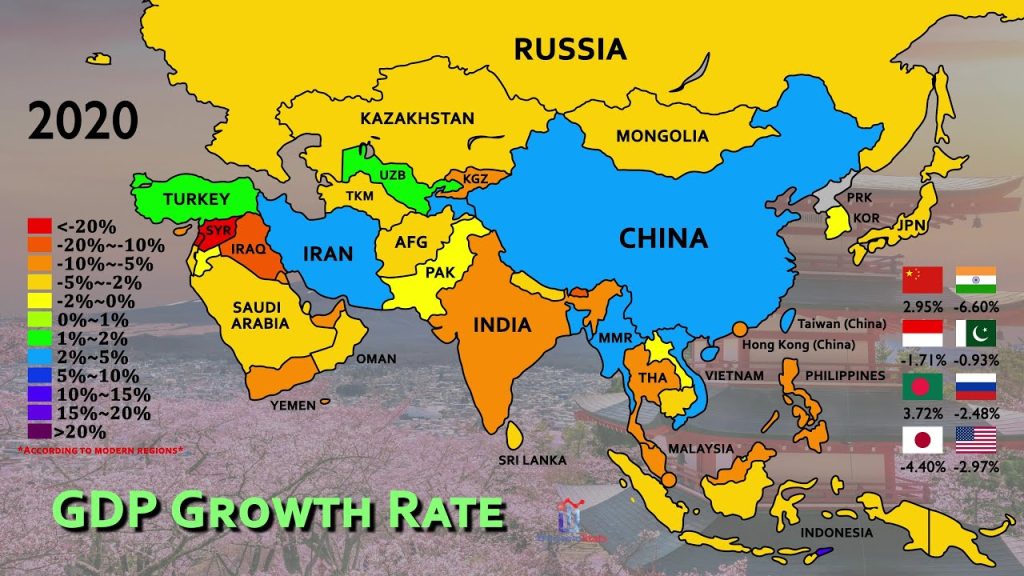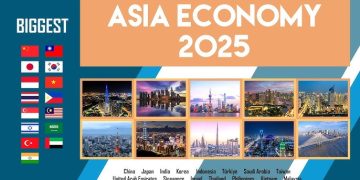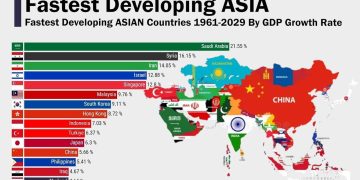- Introduction: The End of Easy Money
By 2025, Asia’s banking landscape stands at a crucial inflection point. The era of ultra-low interest rates and abundant liquidity—conditions that defined the 2010s and cushioned the early 2020s—has definitively ended. Across major economies from China to Indonesia, policymakers are wrestling with a painful reality: the cost of money has risen, leverage is heavier than ever, and the risks embedded in property and credit markets are starting to surface.
The International Monetary Fund warns that Asian financial systems are showing “pockets of vulnerability,” especially where banks are overexposed to real estate or local government borrowing. Meanwhile, credit growth has slowed, margins are compressed, and asset quality is deteriorating unevenly across the region.
Asia’s growth story is intact—but beneath the surface, its banking systems are entering a phase of structural adjustment. - China: The Property Hangover
Nowhere is the adjustment more visible than in China. The property-driven boom that fueled over two decades of urban expansion has turned into a drag on the balance sheets of both developers and banks.
The People’s Bank of China (PBoC) has spent much of 2024 and early 2025 managing liquidity injections and targeted credit easing. Yet the deeper issue remains: local banks’ exposure to the property sector.
Official data show that real-estate-related loans still account for roughly 25% of total banking assets, and local government financing vehicles (LGFVs) add another layer of opaque risk. In smaller city and rural banks, non-performing loans (NPLs) have quietly crept above 4–5%, despite official figures claiming less than half that level.
The government’s “three red lines” policy, intended to deleverage the real-estate sector, has forced developers to scale back borrowing—but that same policy has squeezed bank cash flows, leading to refinancing stress. Beijing’s 2025 focus, therefore, is less about new credit growth and more about containing contagion risk within a managed restructuring framework. - Japan: Profitability Over Risk
In Japan, the story looks different—but equally complex. After decades of deflation and zero interest rates, the Bank of Japan’s modest tightening cycle in 2024 gave commercial banks their first real margin expansion in years.
However, the positive interest differential comes with new challenges: the value of bond portfolios has declined as yields rise, and mark-to-market losses are pressuring smaller institutions.
Japanese megabanks—Mizuho, MUFG, and SMBC—remain well-capitalized, with global operations providing a cushion. But regional banks, dependent on local real estate and SME loans, face structural profitability risks. Their exposure to aging demographics and shrinking local economies means credit demand is weak, while risk-adjusted returns are low.
For Japan, 2025 is not a crisis year, but a slow-burn structural risk year—a period where profitability and credit quality diverge sharply between large and small lenders. - South Korea and Taiwan: Export-Linked Credit Exposure
South Korea and Taiwan illustrate the tight link between industrial cycles and credit conditions.
Both economies have high exposure to global tech exports, semiconductors, and manufacturing supply chains. When global demand dips—as it did in early 2024—banks face a rise in corporate delinquencies, especially among mid-tier suppliers and electronics exporters.
South Korea’s household debt, at over 100% of GDP, remains among the world’s highest. Mortgage rates have climbed, and while the Bank of Korea has been cautious in tightening, the pressure on consumer credit is evident. Taiwan’s banking system is better capitalized, but its export concentration leaves it vulnerable to cyclical downturns.
The key risk in both markets is correlated exposure—when trade slowdowns, property stagnation, and household leverage combine to amplify stress within banks’ loan books. - Southeast Asia: The Growth-Credit Tradeoff
In Southeast Asia, the story is more uneven but deeply interconnected.

- Singapore has emerged as a regional financial hub benefiting from capital inflows and wealth management expansion. Its banks—DBS, OCBC, and UOB—remain well-positioned with strong digital platforms and regional diversification.
- Malaysia and Thailand are balancing credit expansion with prudential tightening; both face risks from SME defaults and external borrowing.
- Indonesia and the Philippines, meanwhile, are navigating rapid credit growth as domestic demand surges.
Yet beneath this dynamism lies a familiar warning: credit booms in emerging Asia often sow the seeds of future instability. IMF data show private-sector credit growth outpacing nominal GDP in several ASEAN countries—a potential signal of overheating.
Moreover, global liquidity tightening and dollar strength have raised the cost of foreign borrowing, pressuring corporate balance sheets that rely on offshore financing.
- The Real Estate Web
Across Asia, real estate remains the most visible—and dangerous—channel of systemic risk.
In China, unsold housing inventory and falling land revenues constrain both developers and local governments. In Korea and Singapore, soaring housing prices have triggered new macroprudential limits. Japan’s property sector is stable but sluggish, with low yields deterring fresh investment.
Real estate not only affects household wealth and confidence but also defines the collateral foundation of Asia’s banking systems. When property values stagnate or fall, the ripple effects on collateralized lending, construction credit, and local fiscal revenue are immediate.
Thus, while Asia’s banks appear solvent on paper, their exposure to property cycles remains a latent vulnerability. - Non-Performing Loans: The Silent Build-Up
Non-performing loans (NPLs) are quietly rising across the region. Official numbers often understate the real magnitude because of evergreening practices and loan restructuring.
China’s headline NPL ratio stands at around 1.6%, but analysts estimate the effective rate is closer to 8–10% once special-mention loans and shadow exposures are included. In Southeast Asia, NPLs remain moderate but are trending upward, especially in consumer and SME segments.
Japanese and Korean banks report low NPLs, but this stability masks credit concentration risks in aging or export-sensitive sectors.
In 2025, regulators from Hong Kong to Jakarta are tightening disclosure standards and provisioning rules, signaling growing concern over asset quality. - The Policy Tightrope
Asian policymakers are navigating a difficult balance:
- Too much tightening risks choking growth and triggering defaults.
- Too much easing risks fueling new bubbles and moral hazard.
Central banks have thus adopted “targeted” approaches—liquidity support to specific sectors (e.g., green infrastructure, tech manufacturing) while curbing speculative lending.
The regional trend is toward macroprudential regulation, including loan-to-value caps, stress tests, and capital adequacy reforms under Basel IV. However, implementation varies widely across jurisdictions, with smaller economies lagging behind.
- Digital and Structural Shifts
The rise of digital banking and fintech lending introduces both opportunities and risks.
On one hand, technology enables better credit scoring, inclusion, and efficiency. On the other, unregulated digital lenders often extend high-risk consumer loans, amplifying systemic vulnerability.
In countries like Indonesia, Vietnam, and India, the fintech sector’s rapid growth outpaces regulatory oversight. Cross-border data flows, cybersecurity, and algorithmic lending models are new frontiers of financial risk.
At the same time, ESG and green finance are gaining traction, with Asian banks increasingly channeling credit toward sustainability projects. Yet this shift requires strong frameworks to prevent “greenwashing” and ensure genuine impact. - Outlook: Toward a More Resilient Banking Future
As 2025 unfolds, Asia’s banking sector is not facing an immediate crisis—but it is undergoing a stress test of resilience.
The region’s fundamentals remain robust: high savings rates, prudent regulators, and diversified growth engines. Yet debt overhangs, property dependencies, and uneven transparency continue to weigh on confidence.
The next phase for Asian banking will be about adaptation, not expansion—rebuilding balance sheets, improving governance, and embracing digital transformation while managing new types of risk.
If managed well, Asia’s banks could emerge leaner, more transparent, and better aligned with sustainable growth. But if complacency sets in, the quiet buildup of credit stress could evolve into the next major test of the region’s financial stability.
































